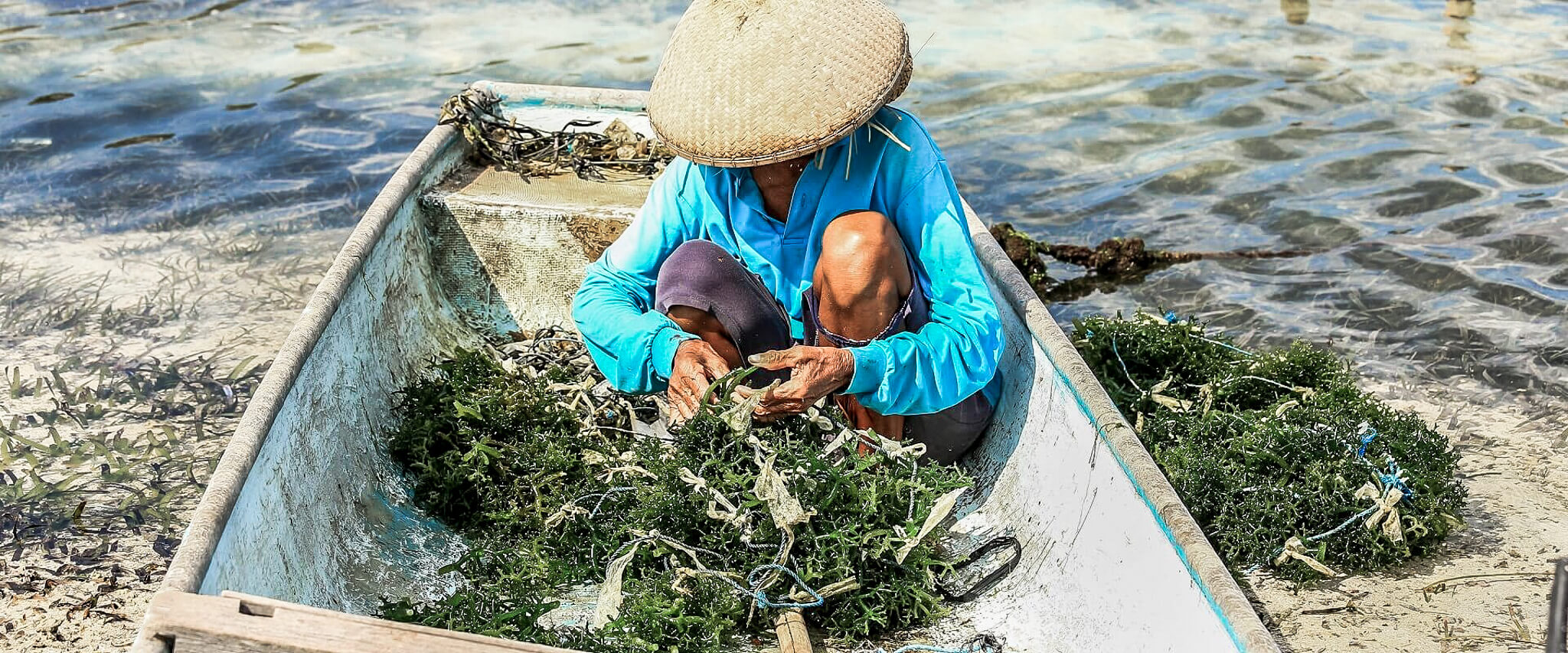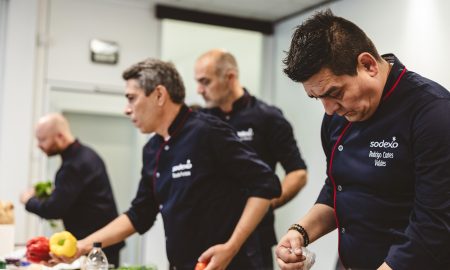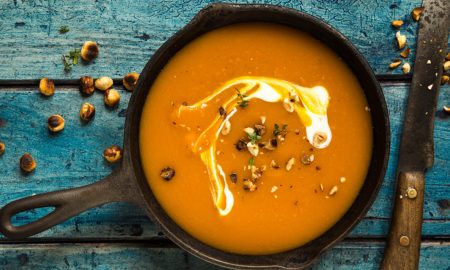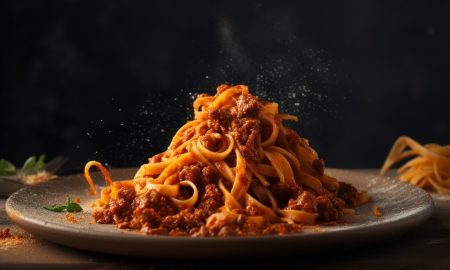Strange. As humans, we are heading towards a climate catastrophe – and yet nobody is interested in seaweed. Today, taking a look below sea level has become more valuable than ever before. Why? Because seaweed is probably the most climate-neutral food on the planet. You don’t need any fertilizer to grow these versatile sea vegetable, let alone pesticides. But seaweed production still encroaches on and negatively affects the marine ecosystem, right? In fact, the opposite is true. Depending on the area, seaweed can be cultivated in a completely climate-friendly way or harvested from game stocks.
Sieh dir diesen Beitrag auf Instagram an
Seaweed: sustainable, healthy and underestimated
“Many seaweed varieties grow up to 30 times faster than land plants,” says Jürgen Mann. “This quickly makes up for gaps in the kelp forests.” The seaweed expert knows what he’s talking about. Together with German cooking legend Otto Koch, he has published the truly meticulously researched book “Algen und Küstengemüse” (Algae and Coastal Vegetables) about seaweed production. Like only a hand full of people in the German-speaking world, Mann knows what really matters when it comes to seaweed cultivation and harvesting. This includes both how the market is developing, and how the gastronomy industry in the German-speaking world is responding to seaweed. “Admittedly, there is room for improvement,” he says.
However, a climate-friendly diet is becoming increasingly important to many people. In the post-Corona era, consumers are also increasingly fascinated by the health aspect of edible seaweed. “If any plant genus has earned the term superfood, then it’s seaweed,” he says. In addition to a variety of tastes that has been underestimated to this day, they contain many healthy nutrients and substances paralleled by only very few land-based vegetables.
As valuable as animal products
To this day, it is assumed that seaweed is the only purely plant-based source of vitamin B 12. This important vitamin, which is otherwise only found in animal products, is essential for red blood cell production and to ensure the human nervous system functions properly. Seaweed also contains an astonishingly high number of proteins, unsaturated fatty acids, fiber, amino acids and trace elements such as iron, zinc, selenium and flourine. Even seaweed’s dietary fiber can work wonders in the kitchen: “The phycocolloid fiber type is found exclusively in seaweed and is incredibly well suited as a gelling and binding agent. But they also act as emulsifiers or stabilizers,” says Mann.
The three most well-known phycolloids are alginate, agar agar and carrageenan. They can be used to bind sauces and are also a vegan substitute for gelatin. “There’s also the advantage when it comes to desserts – sour fruit such as pineapple can be set, which usually doesn’t work with gelatin.”
Sieh dir diesen Beitrag auf Instagram an
And then there’s iodine. Time and again, you read warnings about excessively high iodine concentrations in seaweed products. For Mann, however, most of them are exaggerated. “Dried and fresh seaweed are thoroughly rinsed or soaked after harvesting. This is mainly done to wash off the excess salt. In most cases, this will also remove the majority of the iodine.” But a little iodine should stay in the seaweed. Ultimately, the human body needs this trace element, especially for the natural production of thyroid hormones. “Many Alpine countries, including areas in German-speaking countries, are still iodine-deficiency areas where thyroid diseases occur more frequently,” says Mann. “Iodized table salt is not always enough. In places where marine products are rarely consumed, enriching many dishes with seaweed would be a good alternative.”
Sieh dir diesen Beitrag auf Instagram an
But how exactly is seaweed cultivated? How is it harvested? And what happens after harvesting?
Superfood Algae: Unbelievably versatile
Seaweed can be cultivated in three ways: on land, in coastal areas and far out in the open sea. The vast majority of seaweed producers use coastal cultivation. Why? Because the “underwater gardens,” as Mann affectionately calls them, can be cultivated with relatively little effort. Unlike cultivation inland, fresh water does not need to be constantly pumped into pools. And unlike cultivation in the open sea, coastal plantations are easily accessible, less deep and less exposed to the whims of nature for harvest divers. Antonio Muiños is at the helm of one of these coastal underwater gardens. On the Galician Atlantic coast in northwestern Spain, the Spaniard cultivates a variety of edible seaweed, including kombu, wakame and sea salad, also known as sea spaghetti. Muiños also operates an additional on-shore cultivation facility, with his more than 100 growing ponds located directly on the coast. This means that these seaweed tanks can be supplied with fresh seawater, which is washes up only a few feet away.
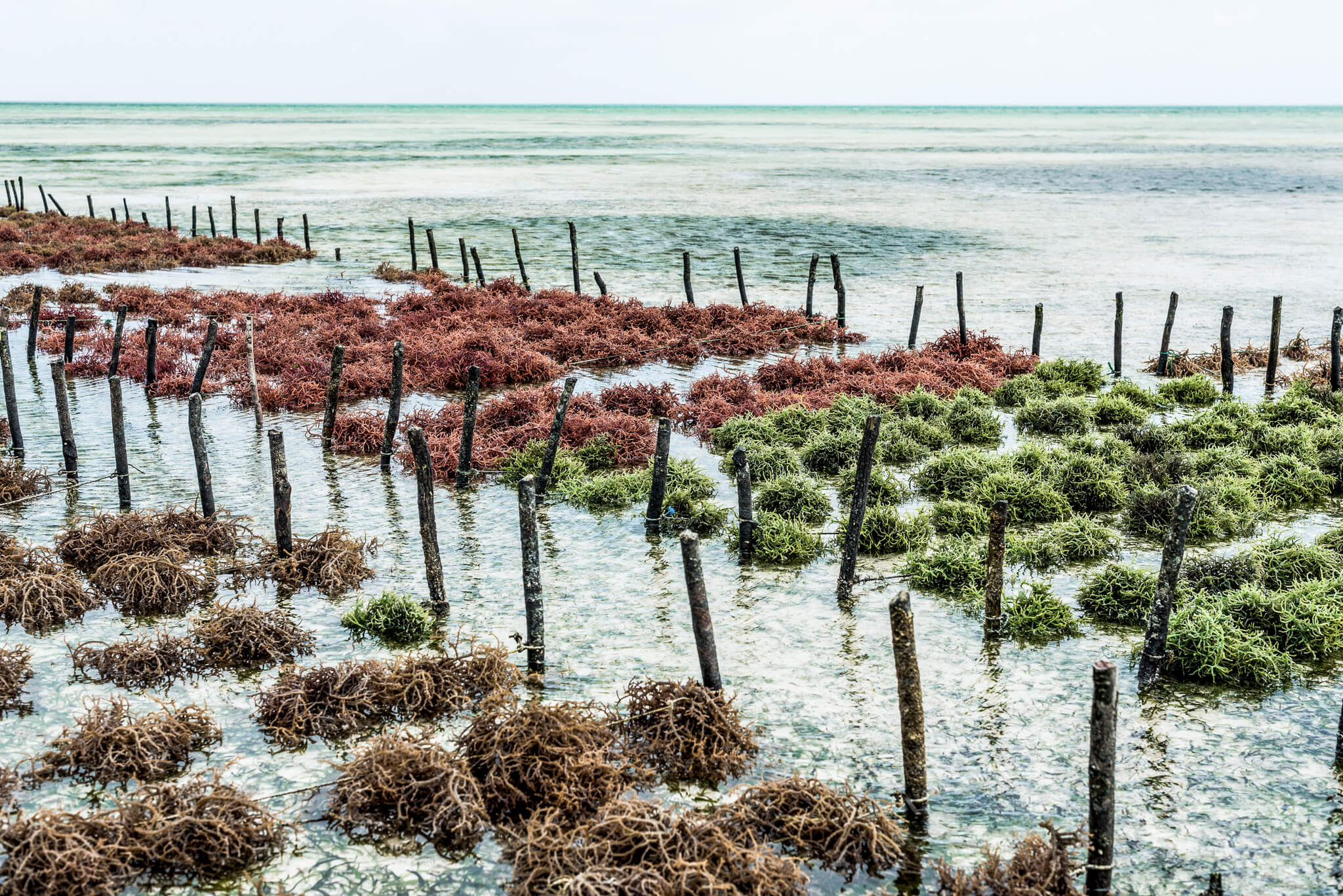
Image: AdobeStock | Ventura
In this day and age, such coastal tanks offer a key advantage: They give you room to experiment. For example, new seaweed varieties can be tested here to determine their suitability for culinary purposes. In addition, it is much easier to carry out measurements of any kind – for example, nutritional values that could change with water temperatures or solar radiation. Another advantage: Since these tanks are protected from excessive sunlight with screens, seaweed harvesting time can also be extended. In coastal waters themselves, harvesting is often subject to a narrow time frame, as some species of seaweed cannot withstand the sun’s rays for long. “In one of these tanks, up to 330 pounds of seaweed can reach market maturity within 15 days,” says Mr Mann enthusiastically. But what happens in coastal waters themselves?
INOCULATE UNTIL THE DIVERS COME
On the one hand, it is the cool Atlantic water that allows seaweed on the Galician coast to flourish so splendidly. On the other hand, this spot boasts steep, rocky shores, similar to the fjords in Norway. “In Galicia, they are called Rias,” says Mann. “Seaweed grows particularly well here because it finds a foothold on these rocks.” The majority of the harvest takes place between March and June. During this period, the divers harvest up to 1000 pounds of seaweed per day along the coast. “Most divers don’t need compressed air tanks for harvesting,” Mann says. “Diving goggles and a snorkel are simply enough.” Usually the cut seaweed then goes into nets. The harvesters then pull them onto the boat and bring the haul to shore when the boat is full.
Sieh dir diesen Beitrag auf Instagram an
However, seaweed does not only grow on the seabed. Seaweed producers such as Antonio Muiños are increasingly copying mussel breeders and allowing valuable sea vegetables to grow on ropes. They do this by inoculating the ropes with young seaweed, which then sprouts between March and June. “The sugar fusion is particularly suitable for this form of cultivation,” says Jürgen Mann. He adds, “This brown seaweed should not be confused with kombu seaweed. It can grow up to 40 feet from the ground, without the need for ropes.”
Seaweed: Superfood and Food Trend 2023
Today, edible seaweed is usually sold in three ways: fresh, salted or dried. Dried seaweed products make up around 90 percent of the world’s seaweed production for culinary purposes. “To do this, the seaweed is washed several times in succession and unfolded to remove sand, mussels or marine gastropods,” explains Mann. “Then they go into the drying oven at 80 to 90 degrees. Depending on the type of seaweed, they dry there for between twelve hours and three days. Their two to three year shelf life makes them particularly attractive to the gastronomy and food industry. They also do not take up much space when dried.”
Sieh dir diesen Beitrag auf Instagram an
So let’s sums things up: Climate-friendly, diverse in taste and texture, healthy beyond measure, long-lasting and space-saving to boot – isn’t it just a matter of time before seaweed finally takes off in the culinary world? “They’ve been saying this for years, but not much is happening,” says Mann. “But I think we’re starting to see some movement. In any case, demand could be met at any time. There is enough space in the sea.”
- Aonori: This species of seaweed is also called green seaweed and is a Japanese freshwater seaweed. It is usually used dried and is quite spicy.
- Codium: with an unmistakable shellfish aroma, this seaweed is often used as a side dish with fish dishes or in salads.
- Kombualge: This seaweed species can grow up to 12 meters in size and is the only one with a high iodine content, which is why it is used more as a seasoning.
- Kraussterntang: a red algae species found on many European coasts. Often used in Ireland as a household remedy for colds, it is also very important for the food industry for producing carages (gelling and thickening agents)
- Nori: especially important for Japanese cuisine and probably the most well-known, this seaweed species is dried and used worldwide as sushi sheets.
In the spirit of sustainability, Hanni Rützler also lists seaweed as one of the trend foods in her Food Report 2023. KTCHNrebel has summarized the most important findings: Food trends 2023


